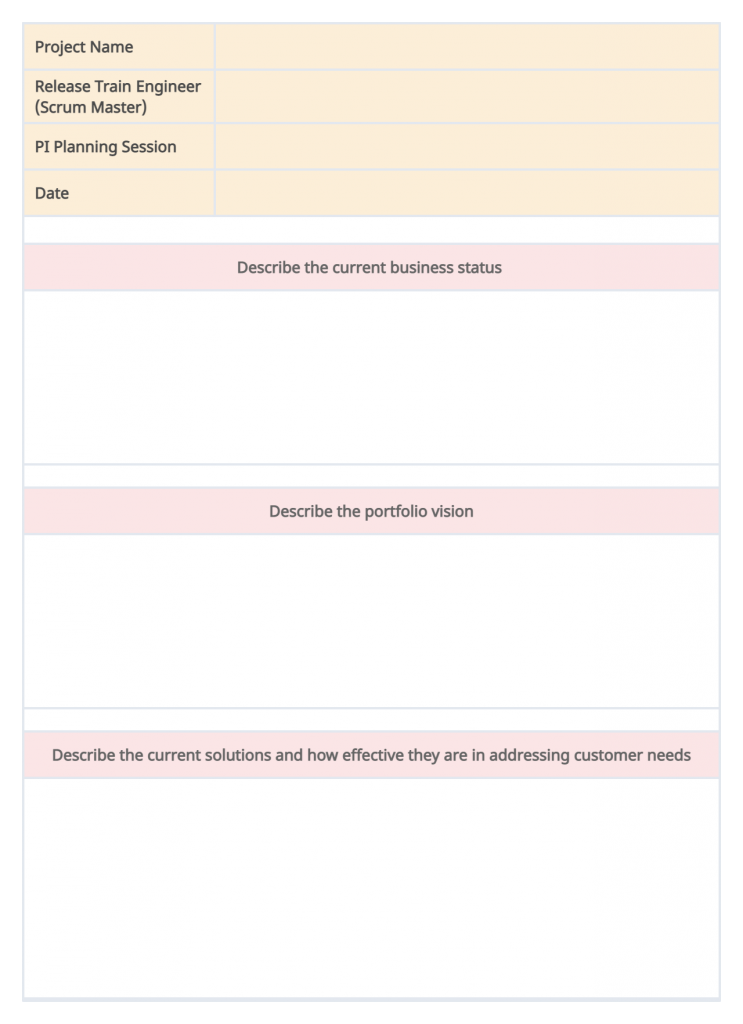PI Planning is an essential part of the Scaled Agile FrameworkTM . It is a great way to get your teams aligned and focused on what’s important. However, it can be tough to know where to start. This guide will walk you through the basics of PI Planning and what you need to include in your agenda to achieve successful planning outcomes.
What is PI planning?
Program Increment planning, or PI planning, is a cadence-based event that is essential to the successful execution of agile releases. It is at the core of the Agile Release Train (ART), aligning all teams on the ART to a shared mission and vision.
PI planning sessions are regularly scheduled events held throughout the year where multiple teams in the same Agile Release Train meet to discuss features, the way forward, the roadmap, and cross-team dependencies.
The PI Planning event is usually organized by the Release Train Engineer (Scrum Master) and is held over a 2-day period that includes 8 to 12 weeks of program increments.
An organization can decide on when to have the PI sessions. For example, many companies schedule PI planning at the beginning of a program increment and after the inspect and adapt iteration, while some opt to have the sessions quarterly. These sessions happen regularly on a fixed schedule allowing project managers or relevant teams to plan ahead of time.
SAFe or Scaled Agile FrameworkTM is a set of guidelines and practices that support larger organizations to adopt agility. It consists of four steps; planning, execution, adaptation, and reflection. SAFe is accepted as a methodology that increases visibility, alignment, and collaboration among different teams and levels resulting in better productivity and delivery.
Remote PI Planning
PI Planning sessions are traditionally held in person. However, the pandemic changed the workplace irrevocably where locating different teams and team members in one place, in person, is not always possible. As such, the priority is to gather all relevant teams who are part of the work in real-time to be present in the planning. To facilitate and support these sessions remotely, a host of online tools and necessary technologies are used.
Why is PI Planning Important?
PI planning is essential for companies of all sizes but is especially valuable for large organizations that may have 100-200 teams and 1000s of developers. Previous to introducing PI planning, these teams did not have any communications with each other and therefore information would be cascaded down from the leadership and management level leading to conflicts in resources, budgets, and work.
With PI Planning in place, proper communication protocols enable teams to get together and discuss what they’re working on and ensure that dependencies are understood and managed effectively. For example, situations where two teams working on different features without realizing there’s a dependency that could hold up the release or require a significant rework of the code, could be avoided.
During PI Planning sessions, teams and team members meet face-to-face (remotely or in person), paving the way for one-on-one interactions that would result in better cooperation in future work. At the end of a PI planning session, the teams are equipped with a plan that includes iterations, backlogs, objectives, and risks for the next program increment.
PI Planning in a nutshell enables,
- structured communications and visibility
- collaboration and better synchronization among different teams
- effective work, alignment on tasks and objectives
- ability to release features in less time and to stay within a budget.
Planning the Event
There are three steps for successful PI Planning.
- Organizational readiness: Make sure that all stakeholders and leaders in the program are available to participate. It would be best if PI planning sessions are scheduled in advance and teams are sent reminders.
- Content readiness: The vision and purpose of the PI session and the program need to be well prepared and in hand in time for the session. This should be clearly communicated to all participants on the first day.
- Logistics preparation: Arrange a large room, if in person, a Microsoft Teams or team Zoom call that can accommodate all participants. In remote sessions, use breakout rooms to divide the teams into small groups so that they can engage with each other more.
Before a PI event, besides the above steps, ensure that the below-mentioned items are identified and established as well.
- Project vision and goals
- Project scope, constraints, timeline, and milestones
- Resources required
- Roles and responsibilities
Agenda
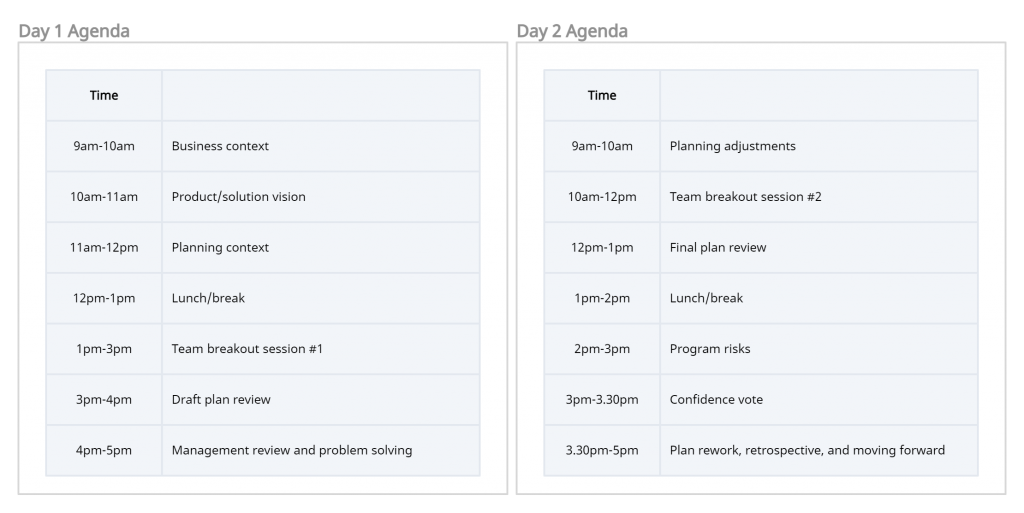
The agenda of the PI planning event plays a critical role. It is the framework that guides participants on what needs to be covered in order for all to understand their role in building and executing the agile release train. The agenda should always be kept simple and easy so that participants can focus on what matters the most: delivering value.
While PI planning or remote PI planning may be different for each organization, there are certain similarities. Below is the standard agenda for a two-day PI planning session that you could follow.
Business Context
An update about the current business status, portfolio vision, and how effective the current solutions are in addressing customer needs. This is usually presented by the business owner or a senior executive.
Product/Solution Vision
This entails the current vision, which includes the top 10 upcoming features, any changes from the prior PI planning event, and prospective milestones. The product/solution vision is typically presented by Product Management.
Architecture Vision & Development Practices
The architecture vision and agile-related changes for improvements to the infrastructure, development process, and communications in the upcoming PI. The Architect/Engineering department takes the lead in presenting the architecture vision and development practices.
Planning Background
An outline of how the planning process works and what is expected.
Breakout Sessions
Several breakout sessions, two at least, spread out during the two days. For the first session, teams will work to identify their capacities, backlogs, risks, and dependencies to come up with draft plans that include initial team PI objectives to be shared with others. These PI objectives consist of goals that are included in the plan but are not committed due to unknown factors or risks.
In the second session, which typically takes place on the second day, teams will continue to work on the plans and make adjustments as necessary. The objectives for the PI are finalized by the teams before being handed over to the business owners or senior management to assign business values.
Draft Plan Review
Teams present draft plans for feedback. Here teams are encouraged to communicate and identify associated dependencies with other teams or agile release trains. The session is a tightly timeboxed sitting where teams present key planning outputs, draft PI objectives, potential risks, and dependencies. Business owners and other teams provide input after each team presents.
Management Review
Business owners, stakeholders, and management will meet to address challenges presented in the draft plan to propose solutions or changes. Special attention will be paid to challenges in scope, resource issues, and dependencies. During the management review and problem-solving meeting, the management will look into sorting scope changes, resolving various issues, and making adjustments.
Final Plan Review
Each team presents its plans to the group. After each presentation, each team highlights risks, dependencies, and barriers. The plan is presented to the business owner and management for approval. If the plan is approved, the PI objectives are put forth for everyone to see. If the management has certain concerns, the team is provided time to address the concerns and present the revised plan.
Program Risks
Teams will identify risks that impede achieving objectives during the planning session. The identified risks will be presented to the whole group and addressed with transparency. During this process, the risks will be categorized as below.
- Resolved: the risk is no longer a concern and has been resolved
- Owned: a member of the group takes ownership of the risk, which cannot be resolved during the discussion
- Accepted: some risks are understood and accepted as potential issues or the reality of the situation
- Mitigated: a plan is identified to reduce the impact of the risk
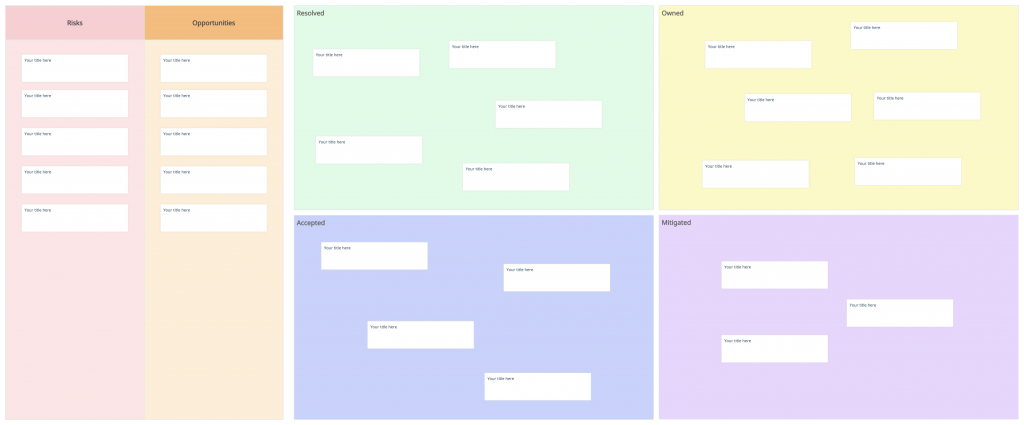
Retrospective
A brief retrospective is held to obtain feedback on the event and what needs to be improved for future events.
Inputs and Outputs of PI Planning (Useful Templates)
Inputs
- Business context
- Roadmap and vision
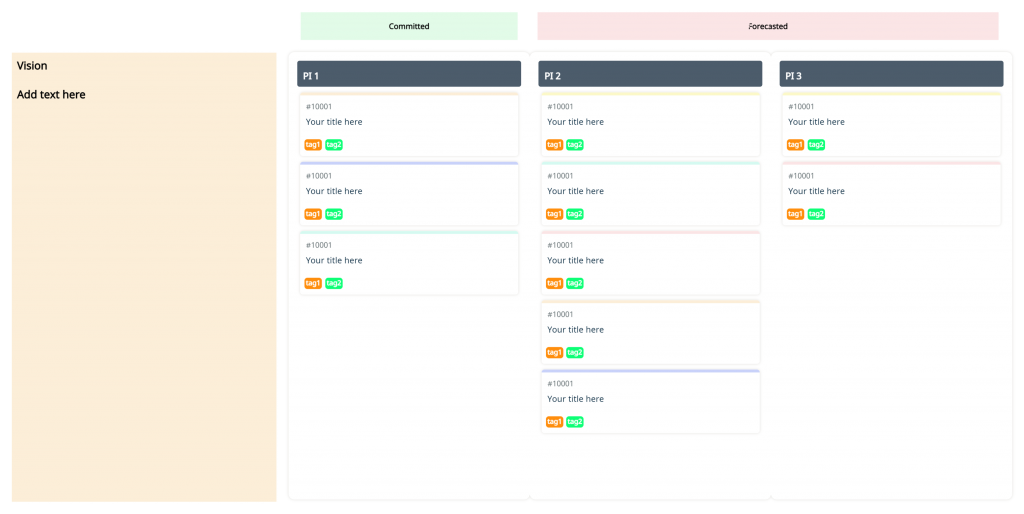
- Top 10 features of the program backlog
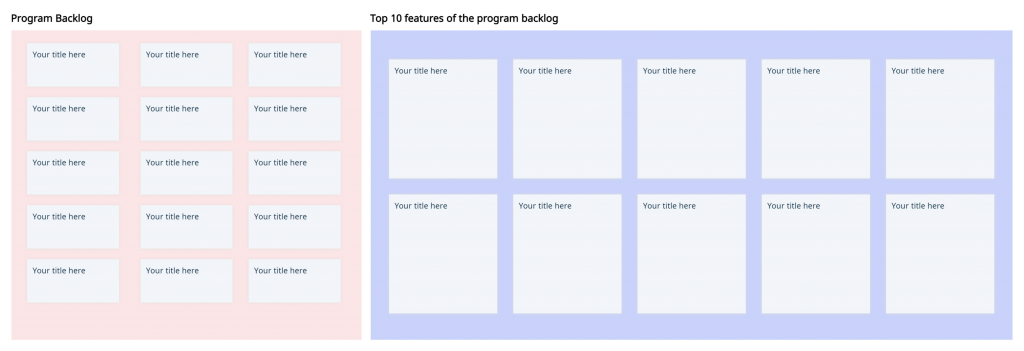
Outputs
- Committed PI objectives: this includes a set of SMART objectives created by the teams with the value of the business assigned by the owners of the business.
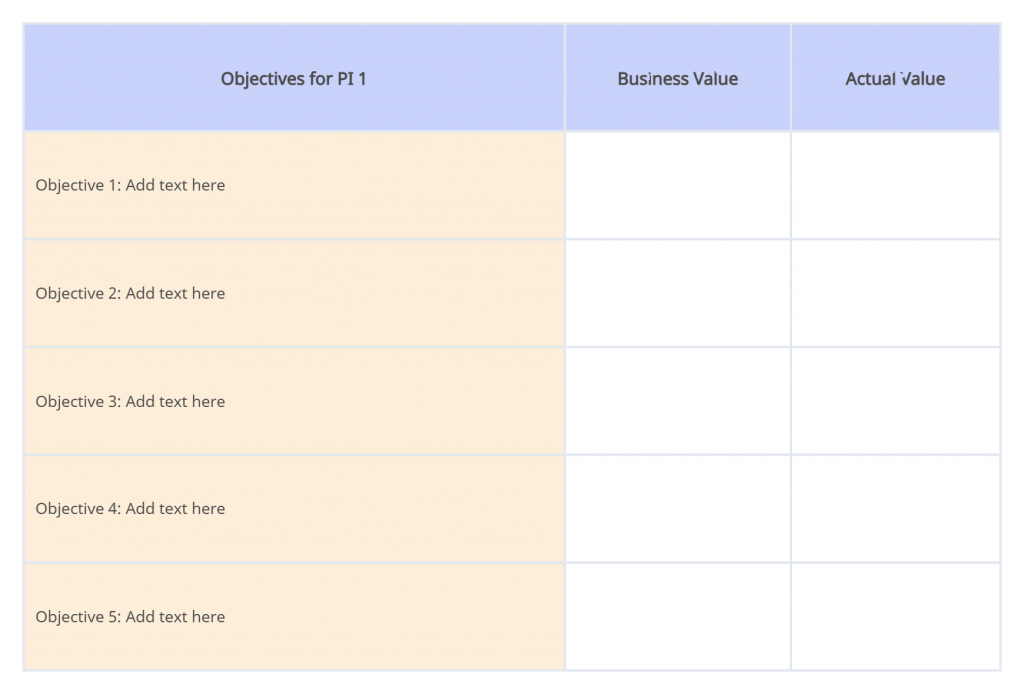
- Program board: include dates as to when the new features will be released, dependencies among teams, and milestones.
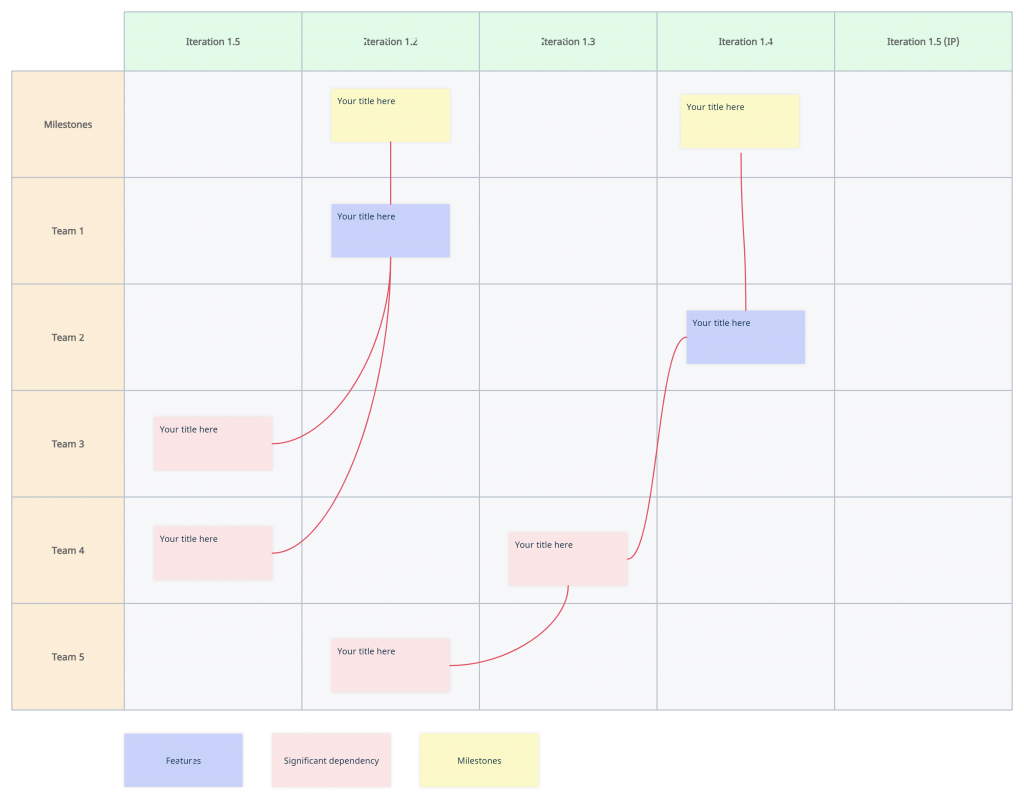
Tips for Successful Remote PI Planning
Remote PI planning events are ideal for distributed teams. It’s cost-effective and allows all teams to participate regardless of their location. Besides the three important steps mentioned in ‘Planning the Event’, it would be important to keep note of the following for a hiccup-free remote event.
Online tools are your go-to platform
Use online tools to confirm participation, share information, conduct meetings and interact in real-time. Also, have a dedicated team to facilitate the sessions and provide support.
Create a schedule and sign up sheets well in advance
Create the PI planning event’s schedule and inform stakeholders well in advance. Ask participants to sign up to confirm their participation.
Select the right time
With distributed teams, chances are team members are scattered throughout the world in different time zones. When selecting the time for the event, be mindful of the time differences and ensure that the event does not go beyond 6-8 hours.
Etiquettes to follow
To avoid miscommunications, and unnecessary interruptions, circulate a list of etiquettes to follow. For example, request all team members to have their cameras turned on and to actively participate. Also, make sure to let them know when it is acceptable to talk and when to keep their mics muted.
Avoid monotony and build trust
Provide participants some respite by including several 5-minute breaks and also ice breaker sessions to keep things interesting and to build trust.
Record the session
Livestream and record the session. This is useful for team members who may miss the session due to unavoidable circumstances or if you need to refer back.
Avoid surprises
Stick to the shared agenda and communicate with participants regarding their roles and expectations.
PI planning sessions are an essential part of agile release management. Make sure to attend a few sessions each year to stay on track and ensure successful product delivery.
Use Creately for your Remote PI Planning
Creately has a host of tools to make your PI planning virtually seamless from the very start.
- Whiteboard and freehand drawing capabilities to brainstorm and collaborate on important ideas, risks, and dependencies.
- 1,000 plus templates and shapes to start preparing the agenda and other needed formats for the PI planning sessions ahead of time to share with the members of the agile train.
- In-app audio and video conferencing to liaise with other team members to brainstorm and discuss the preparations.
- Share workspaces and folders with peers and colleagues. Multiple access and role levels to manage, share, edit and review along with multiplayer capabilities to collaborate in real-time.
- Integration with MS Teams to conduct your meeting and manage the project board all in one place
Initiate your next PI Planning or Remote PI Planning session with Creately to experience the best of visual project management!
